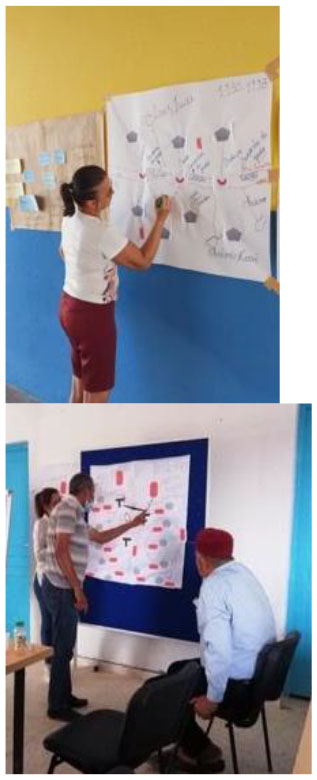Table 1
Overview of different methodological steps and tools used for data collection and analysis.
Aperçu des différentes étapes méthodologiques et des outils utilisés pour la collecte et l’analyse des données.
| Steps | Methods | ||
|---|---|---|---|
| 1 | Literature review | – Review of relevant academic articles, reports and associated documents – Use of existing data from maps, reports and similar sources |
|
| 2 | Selection of case studies | – Participatory diagnosis – Participatory mapping |
|
| 3 | Historical analysis of RWSS trajectory in selected case studies | – Participant observation – Life narratives – Semi-structured interviews (15 in Tunisia and 20 in Brazil; individual and group interviews; virtual and in-person meetings) with key stakeholders: community health agent, water users’ association members, district engineers, and local water technicians. |
|
| 4 | Analysis of the functioning of the RWSS | Surveys (30 in Tunisia and 40 in Brazil) to collect information at the household and community levels on: – Water users – Water uses (drinking, domestic, agricultural) – Infrastructures (lay-out, quality, location) – Resources (quantity, quality, location) – Rules of use (formal and informal) – Evolutions and adaptations in infrastructure and rules |
|
| 5 | Co-design of RWSS trajectories | Participatory modeling: using a conceptual model as a discussion support Workshops in Tunisia and Brazil Tunisia: – 10 interviews to prepare the workshop – 1 workshop mixing both communities (Ouled Salah and Ouled Om Hani) – 12 participants: 4 women and 8 men (6 from Ouled Salah and 6 from Ouled Om Hani communities) Brazil: – 12 interviews to prepare the workshops – 1 workshop in Santa Maria community – 8 participants (4 women and 4 men) – 1 workshop in in Varzea do Meio community – 8 participants (4 women and 4 men) |
|

|
|||
Les statistiques affichées correspondent au cumul d'une part des vues des résumés de l'article et d'autre part des vues et téléchargements de l'article plein-texte (PDF, Full-HTML, ePub... selon les formats disponibles) sur la platefome Vision4Press.
Les statistiques sont disponibles avec un délai de 48 à 96 heures et sont mises à jour quotidiennement en semaine.
Le chargement des statistiques peut être long.




